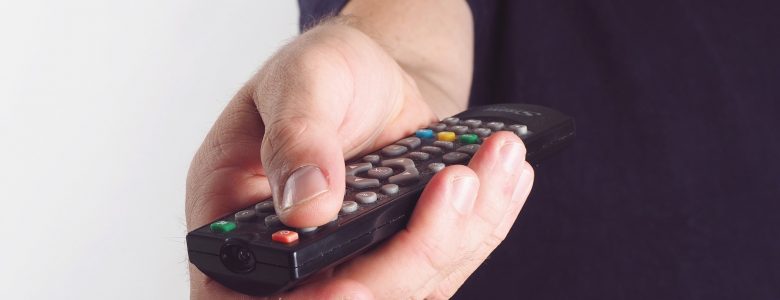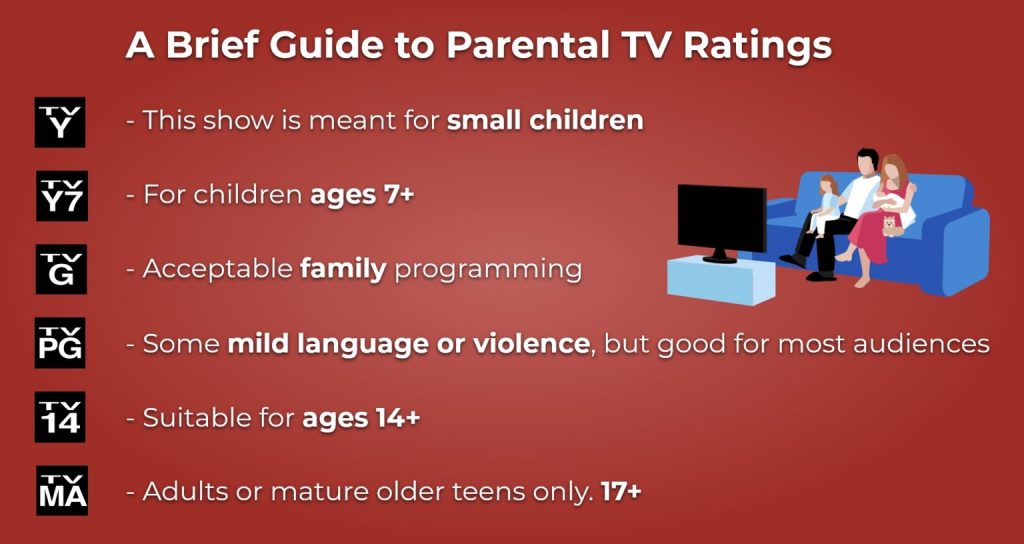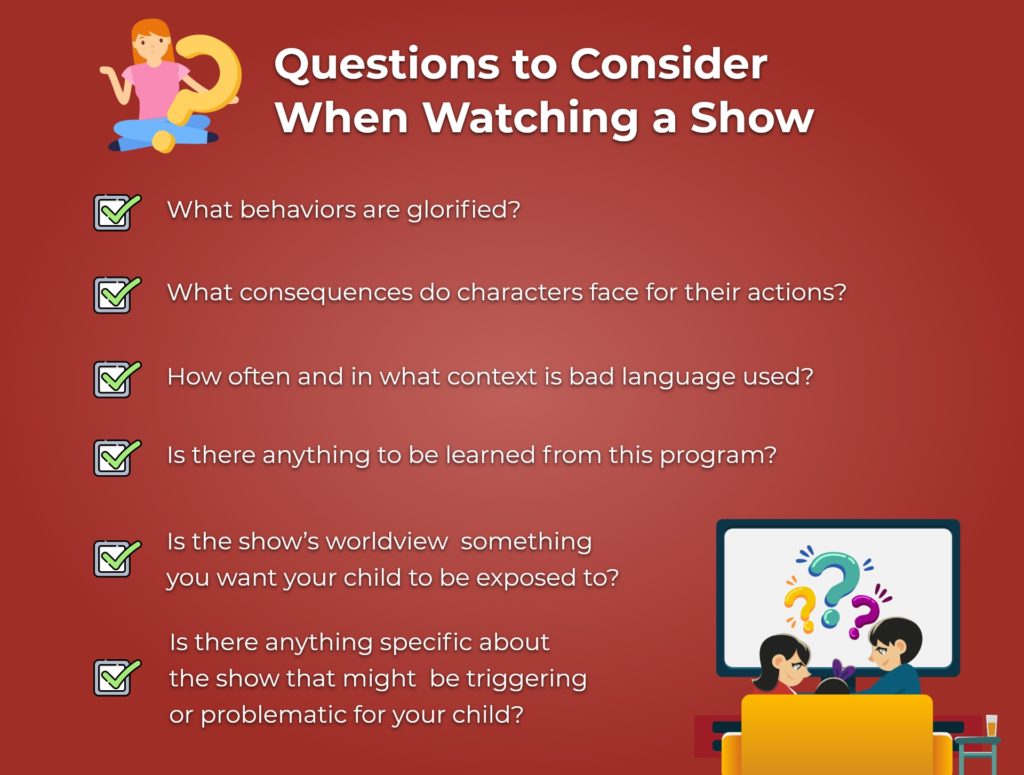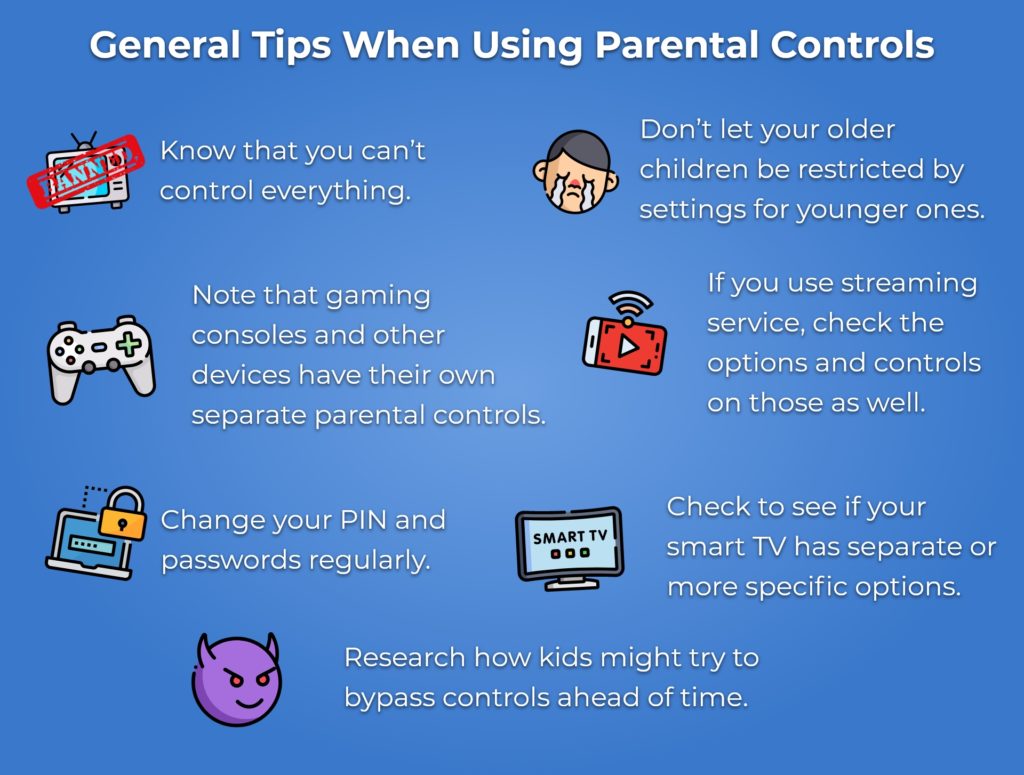March 5, 2020
Parental Controls: Keeping Your Children Safe When Watching TV by Cable Compare

A hand points a TV remote forward
Source: Pixabay
Writers from Cable Compare teach us the ins and outs of setting up parental controls on the televison.
While you may or may not disagree about whether television has taken things too far in recent years given the slow erosion of content restrictions, you still want to make sure that your children aren’t exposed to inappropriate material when they are still too young to understand or properly process what they’re seeing.
Violent, sexual, or otherwise problematic content is everywhere, and on most networks (broadcast or cable). Short of throwing every screen in the house out of a window, what are you to do?
The answer is parental controls. While you may not have heard of them as much since their first push onto the market, they’re standard with most televisions or cable boxes.
Parental Controls: A Brief Introduction and History
Parental controls weren’t always in existence, and before the creation of cable, they weren’t so necessary. Television content used to be held to stricter standards, and there wasn’t so much realistically violent and sexual content available.
Furthermore, television was somewhat more limited and parents could watch and keep track of more carefully what their kids were watching, especially with the knowledge that not many programs running after school would be too objectionable.
However, as cable and network television alike provided a wider array of programming and children were watching TV on their own more often, parents created a demand for a better form of control.
V-Chips were then introduced in the 1990s and allowed parents to filter out certain signals from programs deemed potentially obscene or inappropriate for children of certain ages.
This development was made mandatory in the new millennium after the signing of the Telecommunications Act of 1996, and the use of parental controls, in general, has become more popular with parents since similar tools became widespread online.
Nowadays, parental controls can be considered a given with modern technology, and a necessary given at that. Some amazing artistic achievements have been created on television over the last few decades, but not all of them are O.K. for children.
And while the technology is widespread today, what can you expect in the future?
Outside of any legislation or new regulations that a rapidly changing political landscape brings, we can mostly just anticipate adaptations that give you more control and more refinement in the systems people have gotten used to.
A Guide to the Rating System
A brief guide to parental TV ratings infographic by Cable Compare
Source: Parental Controls: Keeping Your Children Safe When Watching TV | Cable Compare
You may know a bit about the rating system already, or at least be aware of it. But if you’re going to use parental controls properly, you’re going to need to learn how to use it to its fullest potential, as it’s one of the main filtering factors you can use to restrict content on your television.
Here’s an overview of each of the ratings, and here’s a link with more information:
- TV-Y: This rating is for shows that are perfectly acceptable for children of any age to watch, although you’ll find that older children will not find much interest.
- TV-Y7: Shows that might be geared towards older kids (ages 7+) will have this rating. There will likely be conflict, fantasy violence, and some other mild content in the show, but it’ll still be mostly appropriate.
- TV-G: The shows with this rating might not necessarily be meant for young children, but there should be very little in the program that most people would find objectionable. Information or family programming often fits into this rating.
- TV-PG: There might be some mild language or violence, and these shows might not be good for younger children. Older children and teenagers shouldn’t have any problems, however.
- TV-14: Only teenagers and adults should likely watch these programs, although you may want to watch such programs with your children to better introduce them to the content and themes.
- TV-MA: Most parents will want to keep children away from shows with the TV-MA rating. There will be very foul language, the violence can be graphic, and there could be more explicit sexual content in some forms. Rarely will you see this rating on the standard networks, but more shows on cable and premium cable channels will be willing to receive this label.
You might not always agree with the rating system, either in general or regarding certain shows. You also might have different concerns or different degrees of concern from what’s shown, so don’t use these ratings blindly but as guidelines.
You may also have a slightly different ratings system in your country, but you’ll probably be able to use parental controls in one form or another based on these ratings.
Content Descriptor Notes
In addition to the ratings listed above, there are certain letters, usually shown below the rating, that signify what you can expect from a show – in case, for example, you don’t care about language but do care about violence.
- D: Sexual or Suggestive Dialogue
- L: Language
- V: Violence
- FV: Fantasy Violence. This descriptor is limited to the TV-Y7 rating.
- S: Sexual Content
Most V-Chips can filter for these tags in addition to the general age ratings. For example, you can filter out TV-14 shows with the “V” tag specifically.
Additionally, in most cases filtering out one age rating group will filter out all groups above it.
Sources of Parental Controls
We nearly guarantee that if you have a TV, you have access to parental controls. Yet how can you access them, and what might be the differences between them? Here are some notes on the sources.
Smart and Standard Televisions
Many TVs, even going into the 1990s, had some form of parental control. Since the beginning of the year 2000, the United States (and thus effectively the entire Western market) has required nearly all TVs to have a V-Chip installed, which gives it basic parental control capabilities.
To use the V-Chip, you’ll generally want to use your remote control to access the menu of your TV (not your cable box or another peripheral), in which you’ll find the options for parental controls. You’ll likely want to follow the TV-specific instructions from there.
Cable Boxes
How you might access will vary from model to model, and even software update to software update, but most if not all cable boxes have built-in methods to control the content that can and cannot be easily displayed.
If you’re ever confused about what’s possible with your cable provider, you can check their website or the cable box manual, or potentially call customer service if you’re running into difficulties.
Cable Provider Apps and Services
This is a minor distinction at best, as you’ll find there are a few companies that are more involved with the parental control process, and might make available apps and other tools that can make utilizing parental controls easier, safer from failure or breach, or provide other benefits.
Much like the operation of your cable box, you’ll want to reference the website of your cable provider to see what’s available and the best, most effective methods of operation are.
How You Can Use Them
In most cases, especially with modern TVs, you can also use parental controls or similar settings on your television to limit usage time.
Whether you want your kids to focus on other things or you simply want to limit screen time (in which case you’ll also want to put similar controls on phones and computers), you’re the one in control.
You can often restrict the time of day the TV is used. Is the time before dinner supposed to be dedicated to homework? Then you can probably require a PIN to be entered between the hours of four and six to watch TV.
Depending on what tools you have available, you might also be able to block specific shows you find particularly offensive or inappropriate for your household.
We wouldn’t recommend going show by show, as you’ll never be done with your labor, but certain situations might warrant closer attention along these lines.
Every Provider Will Be Different
It’d be hard to imagine a modern cable company without any parental control features available, but you should know that each of the providers may act a little differently or have slightly different options.
You’ll nonetheless have all of the main options, and you shouldn’t have to worry about your children seeing something you don’t want them to if you’re willing to put a few hours into to learn the parental control system, set it up, and think about what guidelines you want to set.
We honestly don’t think that you should base the decision of which cable provider you should work with based on parental controls, as you will have them, and alternatively you might could set up controls through your TV (especially if it happens to be a smart TV). Instead, focus on options, price, bundling potential, and availability.
Questions to Ask
Questions to consider when watching a show infographic by Cable Compare
Source: Parental Controls: Keeping Your Children Safe When Watching TV | Cable Compare
There’s more to keeping your kids safe and evaluating a show than just noticing if sex or violence is being depicted, or if there’s strong language.
It would probably be more acceptable for violence to be displayed with the gravity it would have in real life rather than have your kids see something that would be at home in an R-rated action or horror film.
Similarly, you might be more concerned about shows that display unrealistic body standards or provide sexual misinformation.
Consider the following questions about the content and whether parental blocks would be appropriate:
- Are bad habits, violent behaviors, or self-harm or neglect glorified in any way? Are consequences for actions shown?
- How is bad language used, and what connotations does the bad language have? Is it discriminatory or prejudiced in nature?
- Is there anything to be learned from or anything about the show that makes the benefits outweigh the risks or problems?
- Is the show in alignment with other content your child is accustomed to daily and what might be encountered in everyday life?
- Is there anything about your child that might mean certain shows might trigger or be especially problematic for them?
Ultimately, it’s something you’ll have to think about, and perhaps writing out your own personal set of guidelines would help (mostly for yourself, although sharing with your children might be appropriate and cause better understanding between you two).
Resources to Help Guide You
It’s hard to keep track of everything, which is why some organizations and websites are dedicated to helping you understand parental controls and how best you can use them. Here are a couple of sites and other resources to help you gain more knowledge about content on TV and parental controls.
Common Sense Media: One of the best organizations (and a non-profit) that exists to help parents understand the content their kids are or could be watching, Common Sense Media has a site that looks over movies, games, tv shows, and more, explaining the themes and potentially objectionable content found in them. They also include reviews, go into detail about what’s in the show, and include parent and kid reviews.
FCC: The FCC has several pages dedicated to parents, how to report and make complaints about obscene content, and more if you have questions. Their papers, guides, and resources can give you a general background about parental controls and content warnings on top of this page.
How to Talk to Your Children About Parental Controls
Children, like anyone else, don’t usually like restrictions on what they can and cannot do. If you simply set parental controls without warning and leave it at that, then they could become confused, unnecessarily frustrated, or angry. This doesn’t help anything, and we recommend talking to your children to help them understand why you’re using parental controls. While you know your child and your relationship with your child better than anyone, you might want to consider the following:
- Explain that there are things shown on television they don’t want to see and they’d be unlikely to want to watch those shows in the first place. Try to satisfy their curiosity in a healthy way that helps them grow.
- If they really want to watch a show, it may be best to ask why. Are their friends watching it? Is something else in it connecting to them in some way?
- Encourage open conversations with your children about what they see, and answer any questions they have both honestly and appropriately. If they don’t get answers from you, they might seek answers elsewhere, and establishing trust on such topics will help your relationship in the long run.
General Security Tips and Best Practices
General tips when using parental controls infographic by Cable Compare
Source: Parental Controls: Keeping Your Children Safe When Watching TV | Cable Compare
- Know that while you can control what is shown on your TV at home, you can’t control everything they see. They’ll have friends and will see and hear things in school (other students don’t think about parental preferences when showing friends things on their phones). Just keep in mind that parental controls aren’t a substitute for keeping an eye on the development of your child and making sure they have age-appropriate options.
- Just because you have a younger child doesn’t mean you should deny your older children the option to watch shows that are meant for older audiences. See what might be a good option, whether that means giving your PIN to older children for certain circumstances, providing a TV for them with its own set of controls, or something else.
- Note that parental controls for your TV won’t necessarily work on gaming consoles, which require that you set up a different set of parental controls based on the console. Check websites or the respective manuals on how to do this.
- Similarly, given that most families use Netflix or another streaming service on top of their cable plan, you’ll want to see how you can control those options as well. As with most things, vigilance and preparation will go a long way.
- Change your PINs and passwords regularly (we recommend every other week). Do you remember how clever you or your friends were at getting outside of your parent’s boundaries when you were younger? Expect nothing less from your children.
- Some smart TVs might have their own parental control settings and you can put in more precise controls or lock specific apps such as YouTube.
- Research how to bypass parental controls ahead of time, so that you might develop measures to make sure that this doesn’t happen. At the very least, it can help you know what to look for.
In Conclusion
While it remains true that television can be beneficial for your children if used in the right way, and a wonderful way for them to enjoy things and spend time in moderation. You can’t always be right there watching it with them, and you want to be able to know about and control what images and ideas come their way.
With the above information on parental controls and how they can be used, we hope that you have everything you need.
Head on over to Cable Compare for all things television and entertainment!
Interested in having content featured in an upcoming blog post or issue of The Burgundy Zine? Head on over to the submissions page!
For all other inquiries, please fulfill a contact form.
This entry was posted in Blog, Advice, Blog, Guest Content, Hot Stuff, Blog, How To, 2020, Spring 2020, March 2020, Blog, Science, Technology, Blog, Wellness and tagged in blog submission, blogger, blogging, blogging community, blogs, burgundy zine, burgundyzine, burgundyzine.com, cable compare, cable compare the burgundy zine, child safety, childhood, children, content descriptors, entertainment, entertainment blog, guest blog, guest blogger, guest content, guest post, guest writer, guide, hot stuff, how to, how to read tv ratings, how to set up parental controls, how to set up parental controls on tv, march 2020, online safety, parental controls, parental controls guide, Parental Controls: Keeping Your Children Safe When Watching TV by Cable Compare, parenting, parenting tips, safety, submit your blog, submit your writing, technology, the burgundy zine, tutorial, tv parental controls, tv ratings, wellness, what are content descriptors, what do tv ratings mean, writers, writing, writing community, writing submission.
Guest Content
Guest Content is the user to denote any and all articles submitted to us by fellow writers. More content submitted to us by guest contributors can be found under our "Guest Content" section. If you are interested in submitting content to The Burgundy Zine, please refer to our submissions page.
View more posts from this author



